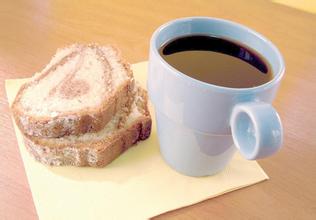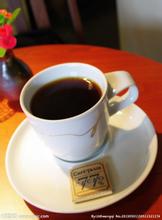An introduction to the legal countries for the treatment of coffee beans in Latin America
An introduction to the legal countries for the treatment of coffee beans in Latin America
Mexican (Mexico) aroma 3 minutes brightness 4 minutes mellow 3 points flavor 4 points aftertaste 4 points
Suitable for baking: Full cityfull city, start the pot at the beginning of the second explosion, whether it is mixed with the formula to make Espresso or brew a single product, Mexican coffee beans can be said to have a unique flavor.
Mexican coffee is a coffee-producing area from Cottpe and Veracruz in the north to Plumas in the central Oaxaca region to Chiapas in the southernmost, and the flavor varies from region to region. Although there are many producing areas in Mexico, but because the quality stability is not high, so many attempts can be made to select the high quality ones. Basically, the coffee standards of Oaxaca and Chiapas are relatively neat. Chiapas is close to the Vevetnango region of Guatemala, so its flavor is similar. In fact, Mexico is also a big producer of organic coffee with organic certification. Generally speaking, Mexican coffee has a light flavor, but it is mild and delicate, and the flavor is good, so it is worth a try.
Columbia (Colombian) aroma 3.5 minutes brightness 4.5 minutes mellow 3.5 minutes flavor 4.5 points aftertaste 4.5 points
Suitable for baking: Medial/City/Full city/Espresso/Dark/French Columbia beans are one of the few coffee beans that range from shallow roasting to very deep roasting, from clean light roasting to deep roasting sweetness, in such a wide range
Columbia beans will have different styles and features.
Once the second largest coffee producer after Brazil, Colombia, now the world's largest supplier of washed beans, has been overtaken by Vietnam. Colombia has become synonymous with good coffee after years of image-building. Despite the balanced flavor, thick texture, famous sour taste and aroma, most Colombian beans are mediocre and have no personality if you taste them carefully. When choosing Colombian beans, you should not only look at the grade marks, but also pay attention to the producing areas, because Colombia is currently graded according to the size of beans, so the Supremo or Excelso on the coffee bag refers to the size of beans rather than the quality, but the size of beans is not necessarily related to the flavor of the entrance, but is closely related to the altitude of the place of origin and taste, so this grading system is often criticized. In fact, most of the medium,
South American countries have switched to altitude classification, and only Colombia maintains this traditional classification system, which many Colombian coffee makers have recognized and have begun to demand a change in the classification system. Colombia's famous producing areas include Medellin, Armenia and Manisales, so the word MAM is sometimes seen on coffee bags, indicating that the coffee beans may come from any of these three producing areas. Almost all of Colombia's finest coffee beans come from traditional small farms, which grow old coffee trees from Typica, which are well planted and carefully harvested and treated, so they are of high quality but relatively low in yield.

Important Notice :
前街咖啡 FrontStreet Coffee has moved to new addredd:
FrontStreet Coffee Address: 315,Donghua East Road,GuangZhou
Tel:020 38364473
- Prev

Introduction to the method of grinding and calibration to describe the taste characteristics of Ugandan coffee
The method of grinding and calibrating the flavor description of Ugandan coffee introduces the unique flavor of Ugandan coffee beans, which is very suitable for making Italian and other flavors of coffee. more importantly, Ugandan coffee beans are strictly screened according to the standards of the international market to ensure their high quality and pollution-free characteristics. Africa is the two main varieties of coffee, Arabica and Robusta.
- Next

Description of Flavor of Coffee beans in Latin America introduction to Grinding and Calibration method
The flavor description of Latin American coffee beans, the characteristics of varieties and grinding scale treatment of Mexican coffee from Cottpe and Veracruz in the north, to Plumas in the central Oaxaca region, to Chiapas in the southernmost part, are all coffee-producing areas, and the flavor of each region is also different. Although Mexico has many producing areas, it has to try in many ways because the quality stability is not high.
Related
- What documents do you need to go through to open a coffee shop? coffee shop coffee shop certificate processing process
- How to purchase Coffee beans in small Cafe how to choose a suitable supplier for domestic Coffee supply Company
- How to drink Starbucks Fragrance White Coffee? how to make Australian White Coffee? what Italian coffee beans are recommended?
- The Story of Flora Coffee: the name of Flora Coffee Bean and the implication of the Flowers on Florna Coffee
- How much does a cup of coffee cost? How much is the profit of a cup of coffee? What is the profit of the coffee shop in a year?
- Yunnan small Coffee, known as "fragrant Coffee", introduces the characteristics of Alpine Arabica Coffee producing areas in Yunnan, China
- 2023 latest Starbucks full menu price list how much is a cup of Starbucks coffee what is better to drink the most popular hot and cold drinks recommended
- Starbucks different kinds of Coffee Price list Starbucks menu 2023 Top Ten Best drinks in Starbucks
- Starbucks Spring praise Comprehensive matching Coffee Bean theme Story Packaging implication and taste description
- The cost of a cup of coffee latte American coffee cost price and selling price

